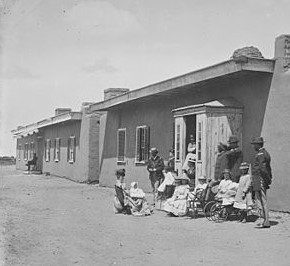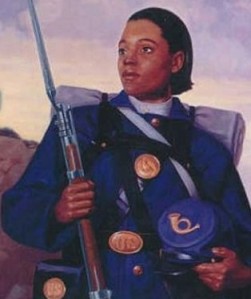I’m working on a historical novel set in Colorado and New Mexico in 1877-1878. The book, based in part on real events, is one I’ve been wanting to write for years. I’ve done a lot of plotting, planning, research and thinking about it, as I weave together fact and fiction.
My protagonist, Catriona, is the daughter of an officer in the frontier Army. I’ve gotten to know her well, though on occasion she surprises me. She’s resourceful and independent, as a young woman must be following her father from fort to fort. But she’s also constrained by the strictures of the times and the restrictions put on young unmarried women. She’s particularly annoyed by officers’ wives who keep trying to find her husbands among the unmarried officers.
There’s a secondary character named Martha, who has become more important. She’s every bit as resourceful and independent as Catriona, with a far different back story, though the two women have things in common. They are both young, unmarried, and seeking their own way in the world.
Martha is African American, born enslaved on a plantation in Missouri, five years before the start of the Civil War. How does she get from a Missouri plantation to a frontier fort in Colorado in September 1877? How does she travel? How does she support herself along the way?
Domestic service comes to mind. Martha can cook and clean, and look after children. While doing research, I discovered that that servants were in high demand at frontier forts. An officer’s wife would write to an employment agency and hire a young woman to help out around the house. The maid would arrive and quickly get a marriage proposal from a homesteader or a soldier.
Martha could also be a laundress. The Army employed women who spent their days on what was called Suds Row, washing all those blue wool uniforms. These women were often Black as well as White, and frequently older laundresses were the wives of higher-ranking enlisted soldiers. And Martha can sew–she’s very good with needle and thread. Maybe somewhere along the line she’ll become a dressmaker.
So, Martha has skills and resources, enough to hire on with a family that’s moving out west. How do I bring Catriona and Martha together at that fort? There is a point at which their back stories intersect, and it has to do with the frontier regulars, as the post Civil War Indian-fighting Army was known.
After the Civil War the Army shrank to a fraction of its wartime size. Officers who had higher rank while commanding volunteer troops during the war found themselves stepping back in rank when commissioned in the regular Army. For example, George Armstrong Custer was a brigadier general commanding volunteers during the Civil War. When the war was over, he was commissioned as a lieutenant colonel in the regular Army, sent off to fight the Plains Indians. We know how that ended at the Little Big Horn.
After the war, promotion was slow. It could take years for an officer to advance. Black troops, many of them former slaves who volunteered to fight for the Union, also joined the regulars and became known as Buffalo Soldiers. Some White officers, with the prejudices of the day, didn’t want to command them. The Army then provided incentives. Officers who agreed to command Buffalo Soldiers got faster rates of promotion.
So, there is the intersection. Martha’s brother is a Buffalo Soldier, Catriona’s father is his commanding officer.
I had a back story in mind for Martha, but it’s currently taking a few detours. She has a mind of her own and other ideas about where she came from and how she got here. She’s taking me in a different direction, and I am paying attention to that, researching her, getting inside her head to see who she is and how she wound up in my story.
It’s a fascinating journey for Martha—and for me. I haven’t figured it out yet, but I’m getting there. I’m doing my research, happily burrowing down rabbit holes to find answers to questions. With this book, my rabbit holes include life in the post-Civil War Army, Buffalo Soldiers, the Indian Wars, especially related to the Mescalero Apache tribe, and women in the trans-Mississippi west.
I find inspiration for Martha’s story in the colorful history of Black women in the west. Such as Stagecoach Mary Fields, who owned cafes, took in laundry, looked after children—and used a stagecoach to deliver mail in Montana. From all reports, she packed a wallop and didn’t suffer fools gladly. She also like baseball and gardening. She impressed a young Montana boy named Gary Cooper, who met her when he was a child and talked about her years later.
Then there was Cathay Williams. She was from Missouri, too. Born a slave, she worked as an Army cook and laundress. When the war was over, she enlisted in the regulars, under the name of William Cathay. She served for three years as a Buffalo Soldier with the 38th Infantry. When a post surgeon discovered she was a woman, she was honorably discharged and went on to work as a cook at Fort Union, NM.






I like how you research the history and the people to come up with your characters and stories. This one sounds like an excellent read! Nice post!
LikeLike
Thanks, Paty. I have high hopes for this one.
LikeLike
Susan, thank you. Yes, I get really immersed in the research. I have piles of books next to my computer. Though at some point I must get back to the story.
LikeLike
What a fascinating story line and cast of characters. It must be hard to pull yourself away from the research and think about writing the book. I look forward to this book.
LikeLike